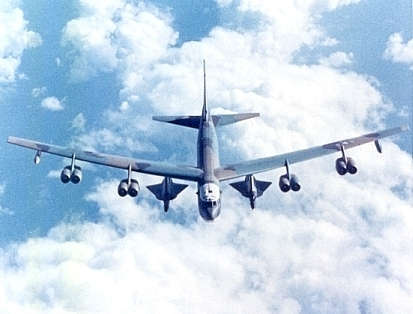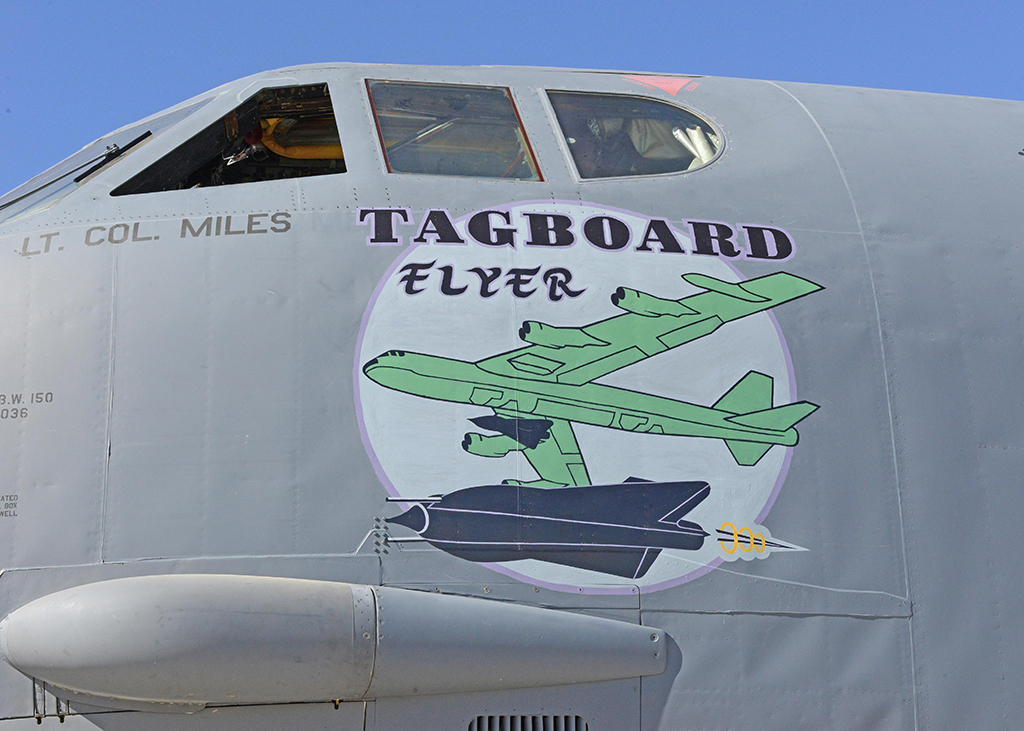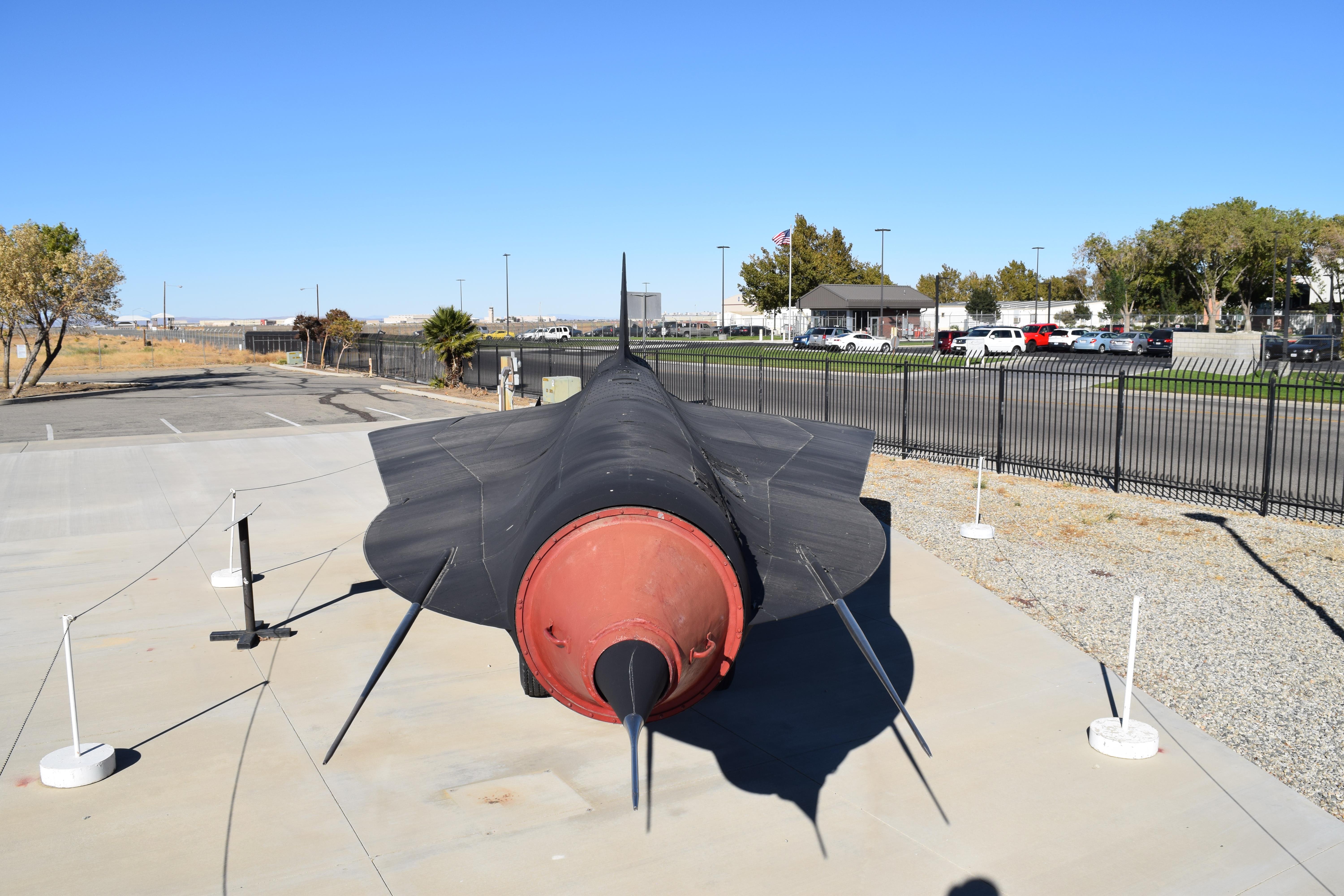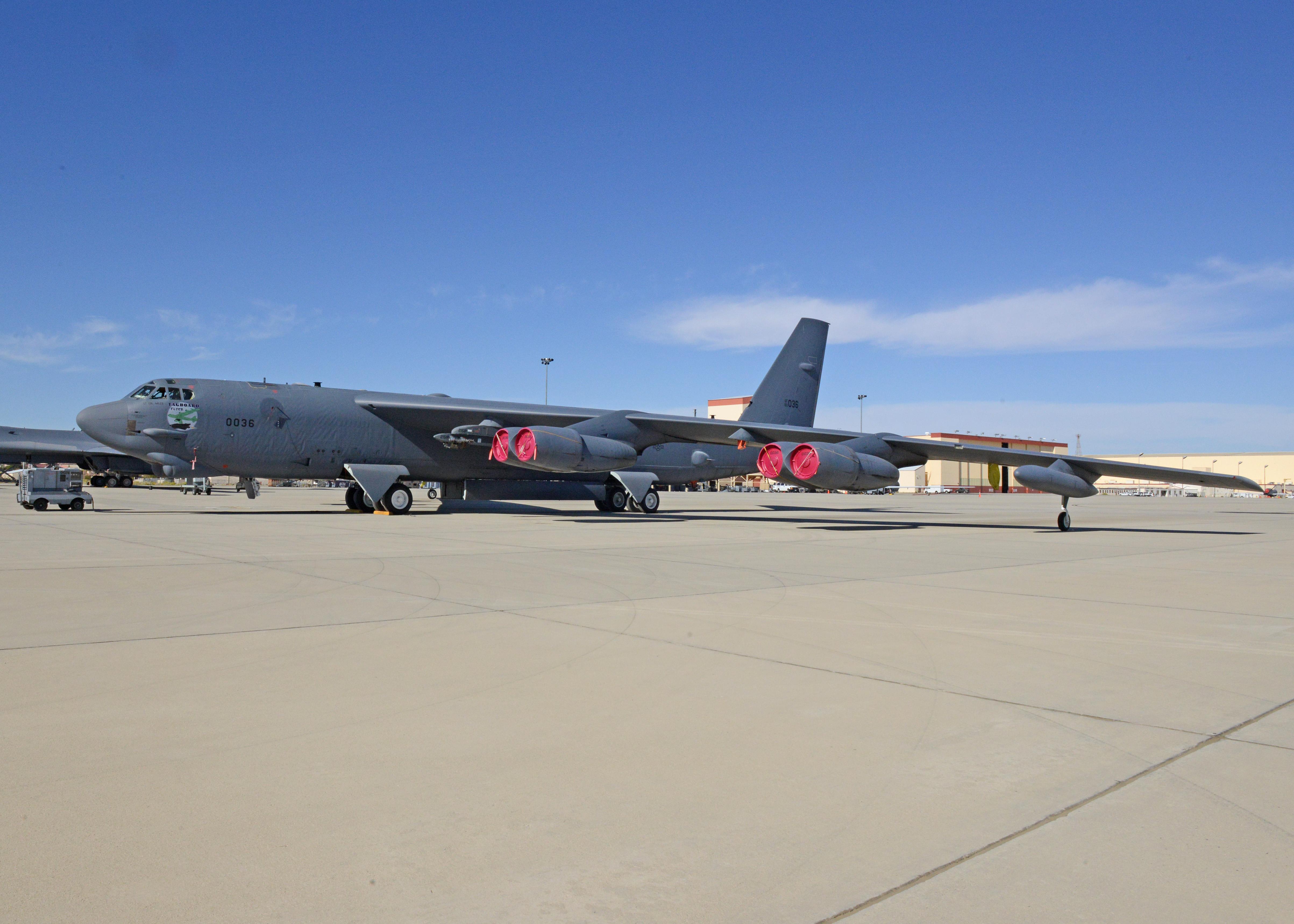 |
| Mike Machat, |
By Kenji Thuloweit
412th Test Wing Public Affairs
October 25, 2017
EDWARDS AIR FORCE BASE, Calif. — A B-52H Stratofortress from the 419th Flight Test Squadron is sporting new nose art to commemorate its storied past
Renowned aviation artist Mike Machat completed the artwork earlier this month on B-52H s/n 60-0036. Machat also recently completed nose art on an Edwards B-1B Lancer and was again commissioned by the 412th Test Wing for this project.
About 50 years ago, the bomber was used in a top-secret test program named Tagboard. The program, which has since been declassified, involved testing the Lockheed D-21 Drone, a ramjet-powered reconnaissance drone that could reach Mach 3. The new nose art is a re-application of the original work, which has since been painted over following routine maintenance, according to Master Sgt. David Peralta, 912th Aircraft Maintenance Squadron, Bomber Aircraft Maintenance Unit superintendent.
“Lt. Col. Middleton [419th FLTS commander] brought the original artwork on the nose of aircraft 0036 to the maintenance unit’s attention,” said Peralta. “Since we had recently gone through the process of getting approval and the painting completed on the B-1 to honor Desert High School, our AMU sought approval to restore the original artwork from the 60s and 70s because of its historical significance.”
According to Air Force Test Center History Office documents, all manned flights over the Soviet Union were discontinued by President Dwight Eisenhower after Francis Gary Powers’ U-2 spy plane was shot down May 1, 1960. While the US. government was planning on using satellites for reconnaissance, the technology was still a few years away and the Central Intelligence Agency determined unmanned drones could fill the gap until satellites became viable.
 |
| D-21 mounted on M-21 |
However, on the fourth flight test, the D-21 experienced an “asymmetric unstart” as it passed through the bow wake of the M-21 causing the mothership to pitch up and collide with the D-21 at Mach 3.25. Crewmembers Bill Park and Ray Torick ejected from the M-21, but Torick’s flightsuit became ripped and filled with water when he plunged into the ocean and he drowned.
After the accident, the M-21 launch program was cancelled, but testers still believed the D-21 would make a valuable reconnaissance vehicle and decided to launch the drone from B-52Hs, one being #0036. The new code name for the D-21 project became Senior Bowl.
 |
| Two D-21's mounted on B-52 Mothership |
After several failed launch attempts, the first successful D-21 launch from a B-52 occurred on June 16, 1968. The drone flew 3,000 miles at 90,000 feet. After a few more flight tests, the CIA and the Air Force decided to conduct four operational launches that all ended in failure in some way. Two flights were successful, however the imagery could not be recovered from the D-21’s hatch. The other two operational flights ended with one being lost in a heavily defended area and the other D-21 simply disappeared after launch.
Lockheed D-21B Drone | The Museum of Flight
During a reconnaissance mission, the D-21 drone would follow a pre-programmed flight path over areas of interest. Then the drone would return to international airspace, where the reconnaissance film package, equipped with its own parachute, was ejected. The package was then recovered in mid-air by a specially equipped airplane or at sea by a ship. Shortly after the film package was jettisoned, the drone self-destructed.
Engineer Ben Rich worked on the D-21 program starting in 1962. Later, when he succeeded Clarence "Kelly" Johnson as the head of Lockheed's secret Skunk Works, he told of a day in the mid-1980s when a CIA man arrived carrying a panel. "Do you recognize this?" Rich did, but he couldn't figure out how the CIA man had gotten it. "It was a Christmas gift from a Soviet KGB agent," the CIA man explained. "He told me it was found by a shepherd in Siberia." The panel was part of a D-21 drone that had disappeared during testing over China in 1969. Hopelessly off course, the D-21 ran out of fuel and crashed in the vast Siberian wilderness.
The D-21 program was cancelled July 15, 1971, and both B-52s used for the program were returned to operational Air Force units.
B-52H s/n 60-0036, currently assigned to the 419th FLTS at Edwards, arrived in 2001 where it has been used as a testbed ever since.
“Most of these maintenance and operations units and many of these old planes have a storied past. It is great to be able to embrace that heritage and history, while sharing it with the next generation,” Peralta said.
Peralta added that the artwork also was done in conjunction with the 419th FLTS’ 75th anniversary.
(Information for this article provided by the Air Force Test Center History Office)
Related/Background
- On the beginnings of drones | Aeriaa
- 50 Years Ago, the Lockheed D-21 Drone Made Supersonic History | Inverse
- March Field Air Museum In Riverside, CA - D-21 Drone, Lockheed
A D-21 reconnaissance drone is on display at Blackbird Air Park at U.S. Air Force Plant 42 in Palmdale, California. (Courtesy photo by Danny Bazzell/Flight Test Historical Foundation via USAF/Released)
A much larger, high-res version can be viewed or downloaded here:
https://media.defense.gov/2017/Oct/25/2001833301/-1/-1/0/171024-F-ZZ999-414.JPG
======================
VIRIN: 171016-F-LO365-003
A B-52H currently used for testing by the 419th FLTS sits on the flightline at Edwards AFB on October 16. (U.S. Air Force photo by Kenji Thuloweit/Released)
A much larger, high-res version can be viewed or downloaded here:
https://media.defense.gov/2017/Oct/25/2001833299/-1/-1/0/171016-F-LO365-003.JPG




1 comment:
QuickBooks Support Phone Number 1800-243-1465. QuickBooks is an accounting program group released by Intuit supports in compliment and sensible controlling of cash related data. It makes things less requesting paying little information to the likelihood that it is the compound data to that level where it can be effortlessly joined.
QuickBooks Support Phone Number
QB 24x7 Support Number
QuickBooks Support Number
QuickBooks Tech Support Number
QuickBooks Tech Support Phone Number
Intuit QuickBooks Support
Intuit QuickBooks Support Number
QuickBooks Customer Service Number
QuickBooks Customer Service
QuickBooks Customer Service Phone Number
QuickBooks Support
QuickBooks Help Number
Intuit QuickBooks Phone Number
QuickBooks Technical Support Number
QuickBooks Technical Support Phone Number
QuickBooks Toll-free Support Number
QuickBooks Toll-free Number
QuickBooks Desktop Support Number
QuickBooks Support USA
QuickBooks USA Support Phone Number
QuickBooks USA Support Number
QuickBooks Support Phone Number USA
QuickBooks Support Number USA
QuickBooks Support Number 2019
QuickBooks Support Phone Number 2019
QB 24/7 Support Phone Number
Post a Comment